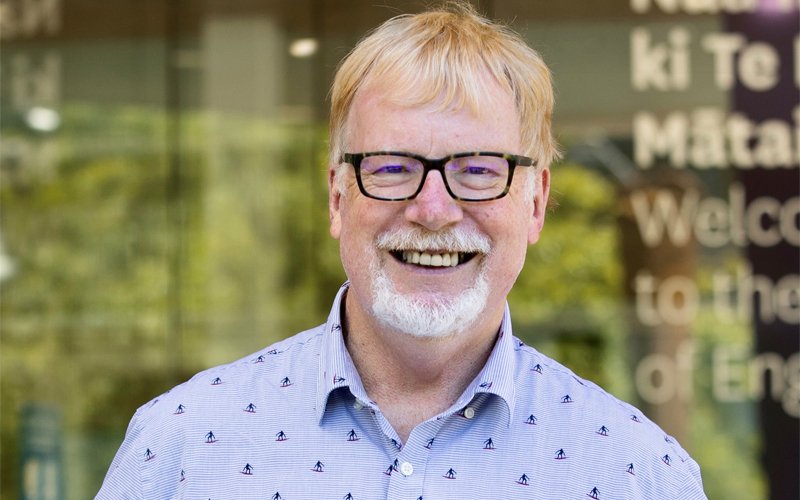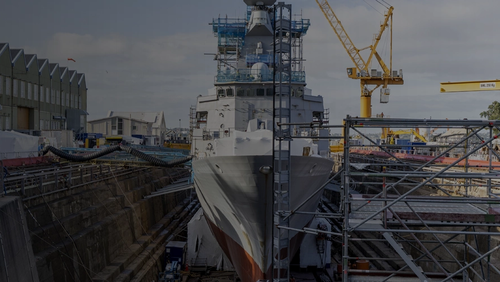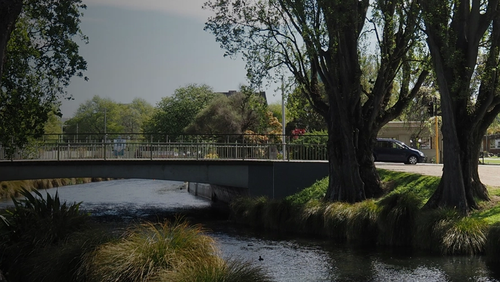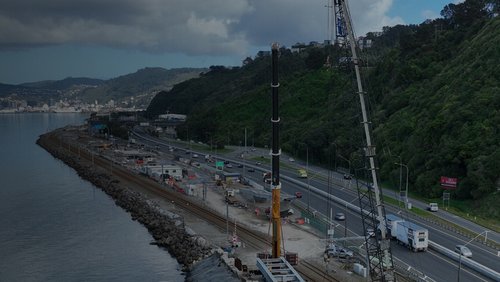10 Oct 2025
Recognised in the 2025 King’s Birthday Honours as a Companion of the New Zealand Order of Merit for services to structural engineering, Professor Charles Clifton CNZM DistFEngNZ is quick to acknowledge “the late great” Professors Bob Park and Tom Paulay who taught him reinforced concrete design for his bachelor’s degree, followed by Peter Moss FEngNZ for his master’s degree. He left university with the strong desire to design iconic reinforced concrete buildings – and so he did.

Photo: Billy Wong
After a stint with Beca, Charles’ work for a London-based firm included designing Saudi Arabia’s King Saud University entrance gate, which he still rates as the most spectacular building he’s designed. In 1983, Charles established the Structural Division of New Zealand Heavy Engineering Research Association (HERA) with a focus on multistorey residential and commercial buildings. He spent the next 25 years helping to build up the country’s steel industry, including helping to establish what is now Steel Construction New Zealand (SCNZ) and being an expert advisor to the National Association of Steel Framed Housing since its formation in 1989. In 2008, he joined the University of Canterbury’s Department of Civil and Environmental Engineering, specialising in structural steel and composite engineering in both heavy and light gauge steel and focusing on the performance of steel structures in severe earthquakes and fires. He’s a Fellow of the Royal Society of New Zealand and a Life Member of New Zealand Society of Earthquake Engineering, and Structural Engineering Society New Zealand.
What attributes make you a good leader?
I don’t really consider myself a good leader as such. The factors that have got me to where I am now are a passion for the topic and for teaching people, curiosity to develop new and better ways of doing things, perseverance, excellent support from my colleagues and very loving family, and a good element of luck.
At the end of each day, what tells you whether you’ve been successful?
Whether I have got through everything I set out to do. That has quite a variable success rate!
What inspired you to become an engineer?
I grew up on a farm in Hawke’s Bay and my dad, an engineer in the army, introduced me to engineering at an early age. This manifested itself in some less than successful attempts to answer electrical engineering questions, such as if you throw a metal grill over powerlines, what happens? (Quite a bit, as it turns out.) While there was some uncertainty over what branch of engineering to study at university, I settled on civil (structural) engineering and haven’t looked back.
How do you connect your work with a sense of greater good?
With the opportunities it has brought to structural steel, the profession and the industry. This has involved seeing the market share for structural steel framing in multistorey buildings grow from zero percent in 1983 to almost 50 percent in 2007 and more than 60 percent now. With that, the industry has expanded and developed into a world class industry.
What mistake have you learned from most?
When developing new concepts, design procedures and design guidelines, be sure these are as straightforward to use as practicable and will deliver dependable outcomes, before publishing them.
Who are some engineering leaders in New Zealand you admire and why?
They include Troy Coyle, the excellent HERA Director, Darren O’Riley who leads SCNZ, and Greg MacRae from the University of Canterbury, who developed the basis of the current seismic design procedures for steel structures from his PhD in the late 1980s. Also, John Scarry, a consulting engineer who has been “the conscience of the profession” for many years, campaigning against poor practices.
What questions have you been asking yourself lately?
Now in my 70th year, I should be asking “when will I retire?”. This is starting to pop over the horizon, but I am not there, yet.
This article was first published in the September 2025 issue of EG magazine.







